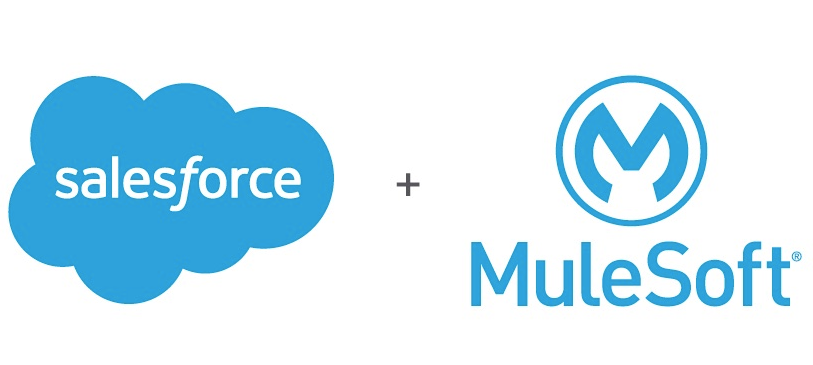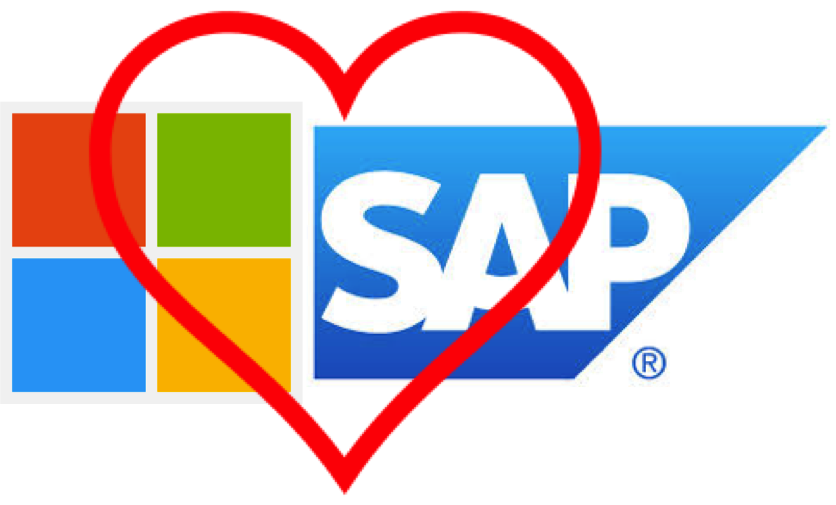
by twieberneit | Mar 22, 2018 | Analysis, Blog |
The News On March 20, 2018 Salesforce announced the signature of a definitive agreement to acquire Mulesoft for a whopping 6.5 billion USD – whopping because the 2017 Mulesoft revenues have been at just $296.5 Million, albeit with a $1 billion target for 2021. The press release states that “together, Salesforce and MuleSoft will accelerate customers’ digital transformations, enabling them to unlock data across legacy systems, cloud apps, and devices to make smarter, faster decisions and create highly differentiated, connected, customer experiences.” Mulesoft is recognized by Gartner as a leader in the 2017 Enterprise Integration Platform as a Service Quadrant. The Bigger Picture As I have stated repeatedly before, most recently here, the enterprise software market is engaged in something that can be called a platform war. There are a few big players and some emergent players in the enterprise software market, and then we have a number of companies that come from the infrastructure side of the house. Business applications get commoditized. Therefore the platform becomes crucial in a battle for dominance. And it is not a given that there will be a dominance. Looking at the 4 big software vendors, Microsoft, Oracle, Salesforce, and SAP, they all have different legacies, strengths and weaknesses. They share one weakness, which is that their core business is in a mainly saturated enterprise market. All of them want and need to play their strengths, while mitigating their weaknesses in order to become the dominant player. Looking at Salesforce, one of its key strengths is the brand. Right or wrong, pretty much the first name that comes to mind when thinking CRM...

by twieberneit | Mar 9, 2018 | Analysis, Blog |
The News A few days ago Salesforce announced an update to its sales cloud that features Einstein powered predictions, insights, and productivity. The press release is linked above or alternatively you can read it below, along with some comments of mine. Salesforce is (again) addressing the three main issues that plague CRM implementations since Tom Siebel coined this term. Let me paraphrase them> Salespeople do not find the time to do their job, which is selling. Instead they are spending an inordinate amount of time entering data that supposedly only helps their management controlling them a little more. Sales managers do not have enough visibility into what is going on in their area of responsibility, what their team is doing (and why), whether they are doing the right thing. The same problem, of course, applies to the Head of Sales, just at a bigger scale. Sales operations is charged with creating meaningful reports that tell the one single truth. This they need to do using data that resides somewhere, data that is distributed, instead of some central consolidated place. Data that is essentially not fully trustworthy. Salesforce is doing this using a triple of features: The Salesforce resident AI: Einstein to help sales persons identify the most promising opportunities to work upon The Salesforce Inbox that increases productivity by attributing emails to the right accounts as well as connecting to the calendar Sales Analytics to help salespeople and their management to visualize, interpret, and use the available data The Press Release Ask any rep what their favorite part of the day is, and chances are that their answers...

by twieberneit | Feb 26, 2018 | Blog |
In the past weeks I have been to some events. Their main topic has been ‘digital transformation’, which is a term that currently gets used all over the place. The good news is that people mostly seem to have understood that digital transformation most of all is a business transformation, with IT being an enabler, not a driver. However, and that’s the bad news, one term popped up everywhere like a bad charm. Sharing Economy And the usual suspect companies are cited as the trailblazers of this sharing economy: Airbnb is apparently the biggest hotel chain. But it does now own a single hotel, rather than a bed Uber, the biggest taxi corporation. It does not own a single taxi I even heard Amazon and Alibaba being mentioned in this context. And then there are plenty more companies that one could mention, like TaskRabbit, Lyft, Zaarly, you name them. There are few terms that make me flinch like this one, maybe ‘democratization of <take your pick of technology>. Why? Because the term does not describe the concept behind the model. Instead it creates a cozy feeling of perhaps doing something good by sharing one’s possessions with someone else. The Oxford Dictionary defines the verb share as ‘have a portion of (something) with another or others’. Sharing in its original context is about jointly using or enjoying something, in a wider sense it is about giving someone else access to something. In any case it has some altruistic touch to it. What the above mentioned companies are about is, positively speaking, helping me to give access to something that I...

by twieberneit | Feb 7, 2018 | Blog |
The most important tool that enterprise software vendors have in their respective arsenals is their platform. While Vinnie Mirchandani rightfully states that Enterprise Software Platforms have so far underwhelmed, Denis Pombriant proclaims them the new battleground. In my opinion it is not that new a battleground but as part of the Clash of Titans it is becoming more evident as a battleground. An enterprise software platform was always part of the battle for dominance in the customer engagement – or putting it into (marketing) industry lingo – customer experience market. It is actually an integral part of it. This is largely because of the ongoing commoditization of transactional business applications. But it was sexier to talk about shiny topics like engagement and experience than to talk about the grease and the machinery behind that drives and enables the technical delivery of engagements – note, that there are systems of engagement, but there is nothing like a system of experience. And now topics like chatbots, machine learning, AI, ambient computing, IoT, to name a few, made the machinery – the platform – the new black. A – perhaps not so – brief history When looking at the broad topic of CRM, customer engagement or customer experience, we have seen a lot of change happening since the early days of Sales Force Automation, SFA. Back in the early 90s one of the first topics has been SFA, with a focus on making a distributed sales force more effective and efficient. Contact management came even earlier, call center software and field service quickly followed. The emerging industry was dominated by little players...

by twieberneit | Dec 4, 2017 | Analysis, Blog |
The News On November 27 SAP and Microsoft announced a new level of their strategic partnership. Their key messages are that S/4 is fully ready to run on Azure Microsoft is committed to SAP and will upgrade its internal financial systems to S/4 on Azure SAP will move a dozen (unspecified) “key internal business critical systems” to Azure SAP and Microsoft will “co-engineer, go to market together with premier solutions and provide joint support services to ensure the best cloud experience for customers” SAP and Microsoft will both provide documentation about their internal projects “to provide customers with guidance and enterprise architecture for deployment of SAP applications on Azure” Of course it is not much of a surprise to SAP “connoisseurs” that SAP is not running its business on just one instance of their own S/4 systems – still, twelve is a fairly sizeable number to migrate to Azure. It is also not much of a surprise that Microsoft is an important and committed SAP ECC customer. As such Microsoft, of course, has plans to upgrade to S/4. All in all this is the long due follow-up announcement to the 2016 SAP and Microsoft announcement of “empowering organizations to advance their digital transformation”. Back in the day I wrote that this announcement shows a lot of potential for the customer and that Microsoft likely will have more advantages to Microsoft than for SAP. In 2016 the announcement was also about Fiori. There is no word about it anymore today. As an interesting aside, Microsoft announced that it will use Azure AI (Cortana) and it’s analysis services for “more efficient...






